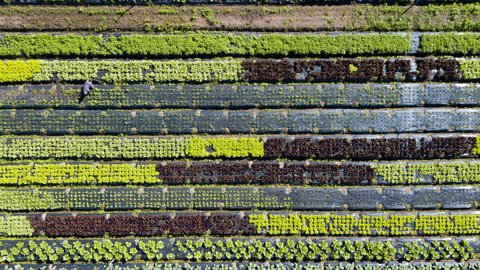What makes APG Asset Management’s majority stake in a 70,000-hectare sustainable forestry asset a compelling move for its client? How does this type of real asset fit into a pension fund’s portfolio? What constitutes the return of an investment like this, and how does it contribute to the responsible investment goals of APG’s client? To explore these questions, we spoke with Portfolio Manager Chris Martin and Senior Responsible Investment Manager Santiago Cortes at APG Asset Management.
In August 2025 Molpus Woodlands Group signed a definitive agreement with Greif, Inc. to acquire the asset for $462 million - one of the largest U.S. timberland transactions in recent years. As an anchor investor in Molpus Woodlands Nature Based Solutions Fund VI, L.P, APG, on behalf of Dutch pension fund ABP, acquired a majority ownership interest in the asset via the fund and through a co-investment vehicle.
The investment in this forestry asset is the first impact investment within ABP’s renewed Private Natural Capital mandate. It is part of its nature and biodiversity theme, which is, together with climate change, given priority in its sustainable and responsible investment policy.
According to ABP, combating climate change and preserving nature and biodiversity are the most important transitions to limit the crossing of planetary boundaries. These two transitions are prioritized by the pension fund for three reasons. First, these changes are important for its investments and participants; second, ABP has the ability to influence these changes as an investor; and third, these transitions have a decisive impact on companies' capacity to create value in the long term.
The forestry asset, which is located in the southeastern U.S. is one of the largest investments in forestry in the U.S. in recent years. The forest will be managed, harvested, and replanted in a responsible manner, thus contributing to the preservation of local biodiversity.
How do you ensure that the investment actually contributes to combating climate change and preservation of nature and biodiversity?
Cortes: “For this investment, we decided to link the performance fees of the fund manager to two independently verified key performance indicators: one around climate and one around biodiversity. For biodiversity, we established a KPI that targets the expansion of conservation areas.”
Martin: “Conservation is broadly defined in this context. In many cases, it won’t mean the area is off-limits. It can still be productive but managed with lower intensity and enhanced environmental safeguards. We also want to identify ‘forests with exceptional conservation value’, or FECVs. These are areas set aside for protection because they are home to threatened species and imperiled ecological communities. We’re also looking to adapt harvest operations in ways that leave behind better wildlife habitat once work is done.”
Cortes: “To ensure a well-structured and reliable assessment process, forest operations are certified under the Sustainable Forestry Initiative (SFI) Forest Management Standard and undergo independent audit annually. Like a statistical sample, each audit reviews a random assortment of forest practices, which include activities related to conservation and biodiversity – such as the management of FECVs. Furthermore, we have reinforced our approach to biodiversity by fully embedding it in the structure of the investment vehicle. Within 90 days of acquisition, Molpus will conduct a comprehensive biodiversity assessment of the property. This assessment will establish a baseline to guide the management strategy over the next 15 years and will serve as the foundation for our active engagement with the manager to ensure biodiversity practices are effectively implemented on the ground.”
Martin: “We already know that 10 percent of the acreage is longleaf pine, which is native to the southern United States. These trees support a diverse ecosystem that is under threat. Molpus will preserve this area as longleaf pine. That is something special about this property.”
Where does the return on this investment come from?
Martin: “This particular forestland offers a more diversified return profile than a typical timberland asset. The largest part of the revenue comes from the core activity: sustainable timber harvesting. But there are additional income streams. Some of the land is used for solar projects and there are carbon capture and storage projects currently under development. There is also some supplemental income from recreational leases, and we expect additional revenue from the sale of carbon offset credits. All together it is a well-rounded return opportunity that aligns with our client’s financial and environmental goals.”
What makes this investment so attractive for a pension fund?
Martin: “The attractive risk/adjusted return derived from a diversified revenue profile is one of the main reasons this asset is appealing for a pension fund. Many of the revenue streams are supported by growing markets for environmental services, and there is increasing recognition of the economic and ecological value forests provide to society. This asset is also geographically diversified. The forestland spans three different states (Louisiana, Alabama and Mississippi, ed.) – which further mitigates risk.
Investors typically look for exposure to forestry because it provides an inflation hedge. The price of wood products and logs tends to rise with inflation, and timberland often performs well during market downturns. So, it serves more as a capital preserver than a primary return driver within the broader portfolio. Timberland has a low correlation with other asset classes and is generally considered a stable, low-risk investment with the potential for steady, long-term returns.”
What kind of trend do you expect over the next 15 years when it comes to the return on this asset?
Martin: “We expect the broader macro environment to support the performance of this investment over the long term. The main driver of returns for this type of investment is the U.S. housing market. While that market is currently facing some near-term challenges, we remain optimistic about the long-term outlook. Demographic shifts and a significant undersupply of housing have created a strong underlying demand. As housing activity picks up, it drives demand for lumber, which in turn drives log prices and ultimately timberland returns.”



